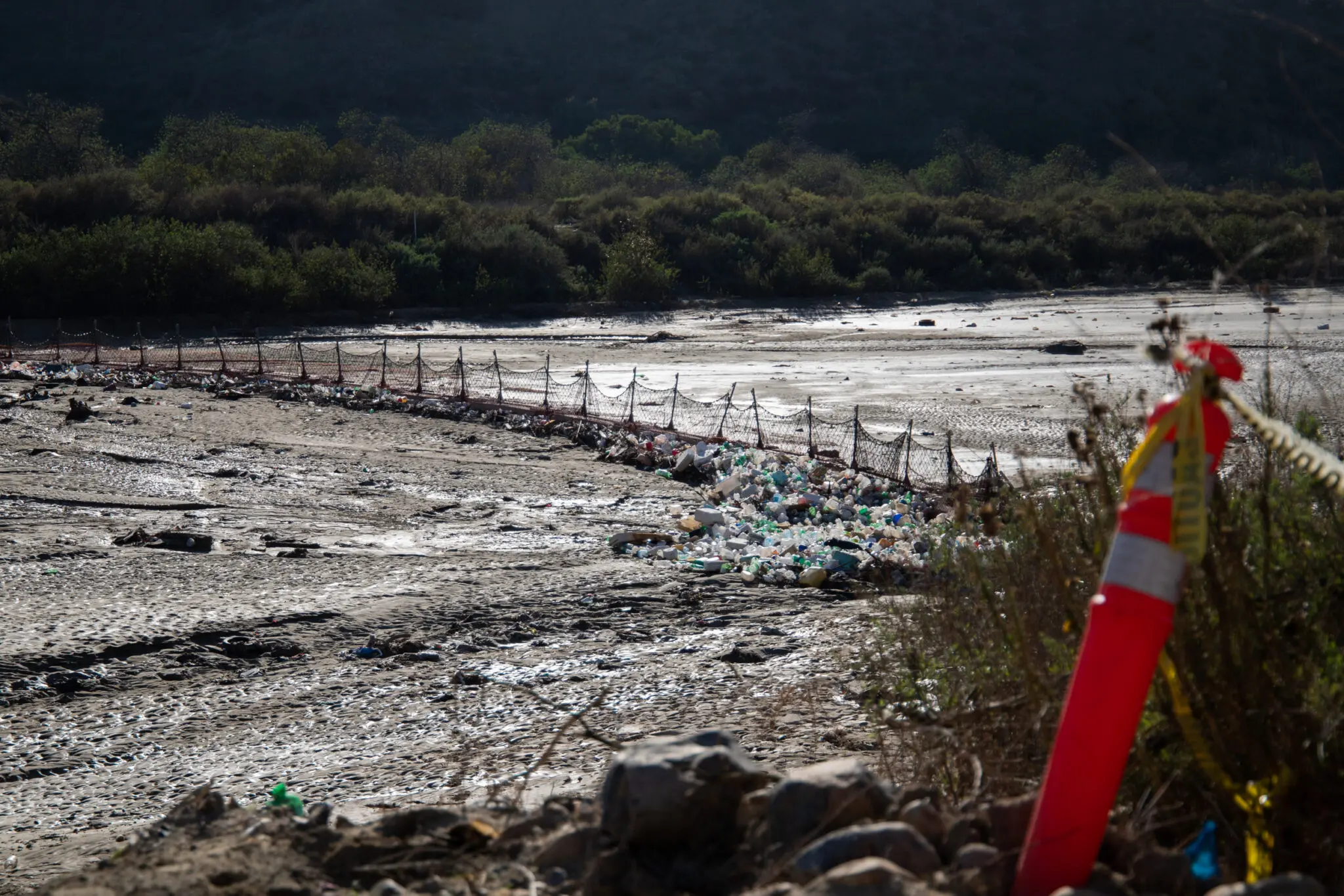
A handful of state lawmakers gathered last week on the side of the Tijuana River Estuary that’s not visibly clogged by plastics and tires spilling from Mexico down canyon gullies or down the river itself to ask the governor for money to, well, stop trash from spilling over the border.
Southern California lawmakers hope Gov. Gavin Newsom will put $100 million in next year’s budget to be split equally between the Tijuana River and the Mexicali-to-Salton-Sea-flowing New River, both sewage-plagued water bodies.
San Diego County already knows what it wants to do with the money if it’s granted by the state. Devonna Almagro, a spokeswoman for Supervisor Nora Vargas, said at least half of the $50 million could go to the California Environmental Protection Agency and fund impediments to trash and sediment in Smuggler’s Gulch, the name for one of the canyons that define the U.S.-Mexico border. The money could buy and maintain other trash capture devices in both countries and pay for a portion of 27 projects identified in a separate 2020 study of how to fix the Tijuana River sewage problem.

As a nonprofit journalism organization, we depend on your support to fund our nationwide Connected Coastlines climate reporting. Donate any amount today to become a Pulitzer Center Champion and receive exclusive benefits!
Assemblyman Eduardo Garcia, who represents the area from east Riverside County to Imperial Valley, told me he and San Diego Assemblyman Chris Ward decided to join forces to secure money one of two ways: in the governor’s budget or through legislation. Lawmakers have until May 27 to pass bills through the assembly floor. And the governor’s revised budget is slated to come out sometime this month.
To spend some of this money at the source in Tijuana, Garcia said he was in Mexico City last month pushing the issue with officials there.
“The lack of infrastructure capacity in the growing region of Baja is at the core of this, so there’s a need for the Mexican federal government to improve these conditions,” said Garcia.
The federal EPA is already working on a plan to build a bigger wastewater treatment plant at the border in San Diego to treat more sewage. There’s $300 million from the U.S.-Mexico-Canada Agreement to do that, but it likely won’t be enough. That’s, in part, because the current plant is in need of some serious upgrades and the EPA is working with the IBWC to do another study on what needs to be fixed.
Once that work is finished (in mid-April the EPA said construction is slated to begin in 2024), the EPA still has a list of about $330 million-worth of projects left.
“Delays in action by the federal government… on both sides (of the border) have clearly forced the state of California to protect the health of Californians,” Garcia said.
By the way: To the reader who is concerned how often I use “poo” as a synonym for sewage in my deluge of Tijuana River reporting, here is proof that it’s a pretty good synonym.
Around the time of the last mysterious spill (meaning a flow of water over the border or down the Tijuana River without rain) the IBWC took a few water samples. In a Nov. 27 sample from Stewart’s Drain, total fecal coliform units or CFU (otherwise known as poo) measured 16 million per 100 milliliters of water. A Jan. 18 sample from the Tijuana River measured 7.6 million CFU per 100 per 100 milliliters of water.
For context, the South Bay International Wastewater Treatment Plant at the border is supposed to clean the Tijuana Sewage it receives to a level of 400 CFU per 100 milliliters of water before it can be dumped into the Pacific Ocean. In other words, the state water quality regulators are saying 400 CFUs is a level that’s OK to turn back out into nature. So what’s spilling into the estuary untreated via the river or other untreated spills is between 19,000 and 40,000 times more pooey than that.







